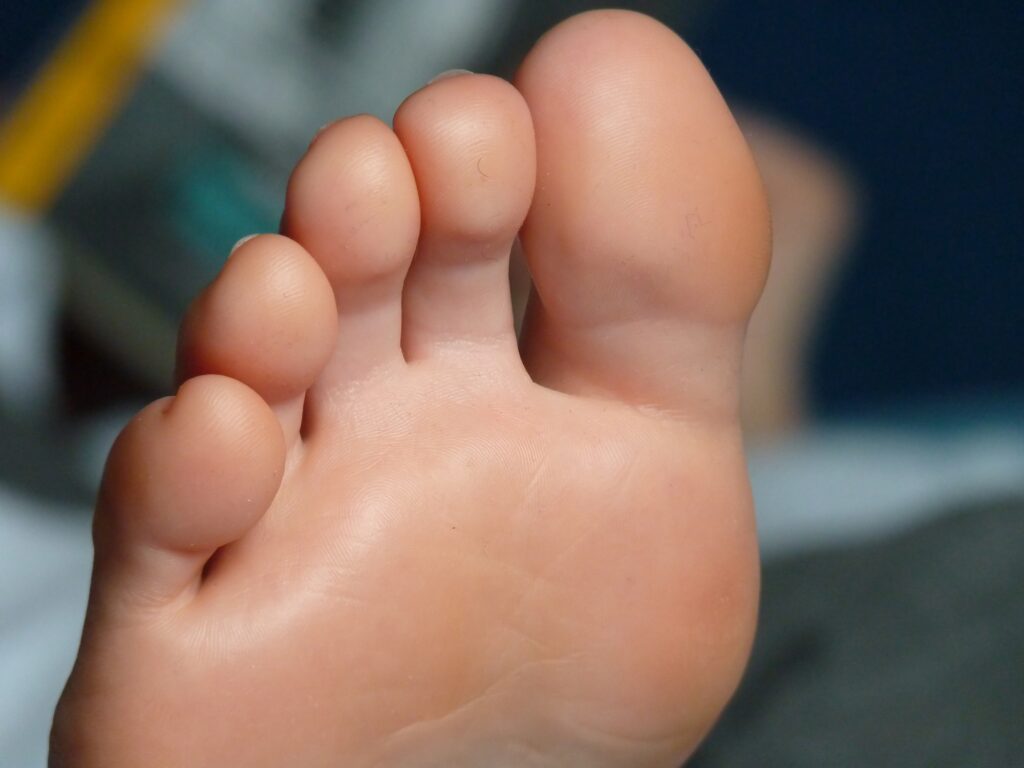Hammertoe vs. Claw Toe: What’s the Difference

Your feet are designed to endure a great deal of pressure on a daily basis. For many people, taking the typical thousands of steps a day that is customary is no problem. However, if you have ever experienced deformities in your feet, like hammertoes or claw toes, you know that the task of walking or even standing can become difficult.
What Are Hammertoes?
Hammertoe is a foot deformity that is usually caused by footwear. It is caused by a toe that is bent permanently downward. The most common symptoms associated with hammertoe include corns and calluses that are resulting from toes rubbing together. These characteristics along with pain are commonly associated with this condition.
What Are Claw Toes?
A claw toe is often the result of nerve damage or diseases like diabetes. A claw toe is so named because the toe transforms from its normal state and appears much like a claw digging down into the soles of the shoes. This in turn will often cause painful calluses or corns to form, which along with the toe’s appearance characterize this condition.
What’s The Difference?
Hammertoes and claw toes both result in pain and irritation in the feet. In most cases, the toes affected in both these conditions are not the large toe but the smaller ones. If left untreated both of these conditions will continue to get worse. In general, the biggest difference between these two conditions is the location of the affected toe or how many toes are involved. With hammertoes, it often affects the next toe closest to the big toe only. With claw toe, there is usually more than one toe involved. In addition, while hammertoe will typically alter only the middle knuckle joint of a toe, claw toes often impact all three toe joints of the impacted toes. With both of these conditions, there is a noticeable toe deformity, altering the toe’s natural bent.
What Causes Hammertoes and Claw Toes?
There is a wide range of causes that can lead to the development of both hammertoes and claw toes. This can include the natural shape of the foot as well as specific health-related conditions. The following are the most common noted causes of these conditions:
- Genetics
- Improper shoes or shoes that jam the toes together, upwards, or downwards like high heels.
- Trauma/nerve damage
- Arthritis
Treatment Options for Hammertoes and Claw Toes
Thankfully, if you treat your hammertoes or claw toes in their earliest stages, the result is often a positive outcome. In many cases, the solution to the problem can be as simple as wearing wider shoes, or shoes for claw toes, with a taller box to help accommodate the bent of the toes and reduce friction. Insoles and pads can also be helpful. Of course, when it comes to severe deformities, causing significant pain and difficulty standing and walking, surgery might be necessary.
People Also Ask
What is the Difference Between Hammertoes and Claw Toes?
- Hammertoes and claw toes are both foot deformities, but they differ in the number of toes affected and the location of the deformity.
Can a Hammertoe be Treated Without Surgery?
- Yes, early-stage hammertoes can often be treated without surgery. However, more severe deformities may require surgical intervention if pain and mobility issues persist.
When Should I See a Podiatrist for Hammertoes or Claw Toes?
- Early diagnosis and treatment can prevent the condition from worsening, reduce pain, and improve mobility. A podiatrist can recommend treatment options tailored to your condition and help you avoid more invasive measures like surgery.
Visit a Podiatrist
If you suspect that you are suffering from either a hammertoe or claw toe condition, it’s crucial that you get into a podiatrist as soon as possible. Since diagnosing and then treating the deformity early ensures the best outcome, you do not want to put off treatment any longer than necessary. Thankfully, there are many treatment options that can reduce the pain of these conditions and get you back to living a pain-free life once again.
